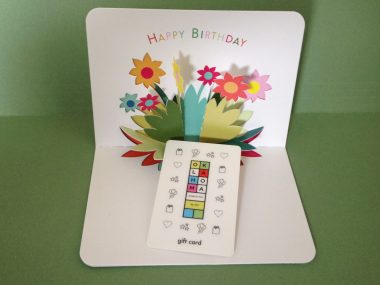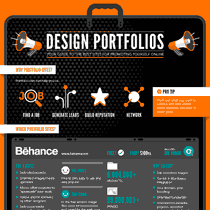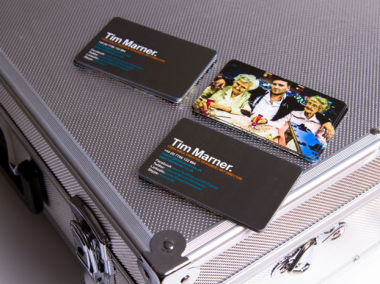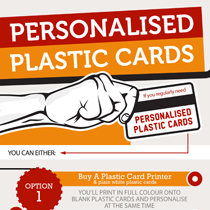
You’re presumably thinking about introducing customer loyalty cards for a good reason, not a whim. You want them to improve sales and profits, then why not learn from the big retailers but go one better.
Sure, you could have loyalty cards printed on cardboard.
If your business is a straightforward one, say a coffee shop, it could issue customers with cardboard loyalty cards. Each time a customer buys a cup of coffee their loyalty card would be stamped and they’d get their 10th cup for free.
But what have you gained? Perhaps you’ve sold 9 coffees when you would have sold 10 anyway without your loyalty card programme. Did you get anything in return for that free coffee or has your programme cost you the lost revenue of one cup?
Maybe your loyalty cards are working for you and that customer drinks more coffee than they would without the programme or perhaps they use your coffee shop over another just down the road.
You’ve given out a card but do you really know if you got anything in return?
Follow the example of other retailers and use customer loyalty cards to gather data.
Yes, they issue loyalty cards so that we shop in their stores rather than a competitor’s but they also do it for the information it provides.
They don’t just give them out, they want something in return, they want your contact details and they want your data. In return they’ll give you a customer loyalty card, why, because they know you’ll keep it and have it with you whenever you shop. They’ll make it look and feel like a credit card, in the same size, shape and thickness so that you’ll keep it with all the other plastic cards in your wallet or purse.
Now whenever you shop they can link purchases to people, they can see what you buy, they’ll know what beer you drink and whether you’re a vegetarian.
From the data it gleaned from its customer loyalty cards one retailer is reported to have spotted a trend for fathers to visit its stores on their way home from work on a Friday to buy nappies for their children. As a result, their stores placed six-packs of beer on adjacent shelves and found that sales of beer went up.
Now I’m not suggesting every retailer can utilise data from its customer loyalty cards in such a sophisticated way but it goes to show how data is used to influence store layout and increase sales.
In an interview last year Edwina Dunn, co-founder of Dunnhumby, (the company that makes sense of all the data from Tesco’s Clubcard and now wholly owned by Tesco) said the aim of the Clubcard was to get shoppers to visit more often and to get them to put an extra item in their basket.
Whilst an extra item here and there in a few baskets soon mounts up for Tesco I’d suggest the more important point to take from this for smaller retailers is to get shoppers to return to a store.
Customer loyalty cards – the big retailer way.
Most loyalty card programmes offer very little in reward. For example the Nectar card programme used by Sainsbury’s gives one point for very £1 spent, although it does offer double points and more at times on certain purchases. However in its basic form a shopper would need to spend £5000 in a year to accrue enough points for them to get back £50.
Yes, there are many families spending £100 a week at Sainsbury’s but is giving them back £50 a year the reason they choose to shop there over one of their competitors? I’d say there are many other factors ahead of their Nectar cards influencing their decision. Isn’t the £50 a year nothing more than a thank you for spending £5000?
So if it’s necessary to spend £5000 a year in a supermarket in order to be rewarded with just £50 by a customer loyalty card programme how on earth can an independent retailer run a programme that is attractive enough for a customer to want to take part.
The answer – a more generous customer loyalty card programme.
Issue customer loyalty cards but be generous with the points.
If customers don’t use their loyalty cards they’re not going to help a retailer increase his profits and turnover. The main reason customers don’t use their loyalty cards is the lack of points generosity. Of course it’s vitally important a retailer considers the financial impact of a loyalty card programme, however if structured correctly the retailer can be generous with the points.
Don’t copy the large retailer model, instead consider the following-
Getting started
Research has shown that adding some free points to loyalty cards when they’re first issued results in a more successful programme.
Cross selling
Don’t give the 10th cup of coffee for free. Instead offer a muffin at half price on the purchase of the 10th cup. Some of those customers will become muffin-buying customers in future.
Beauty salon owners don’t offer the same treatment for free on the 8th visit. Instead offer the client a different treatment or one they’ve not had for six month’s at half price.
Florists, invite those with 500 points on their loyalty cards to an evening event of flower arrangement. Offer a discount on flower arrangement supplies or twelve flowers for the price of ten.
And butchers, why not give half a pound of sausages to customers with 500 points. Introduce a new recipe every few months and some of those customers will become sausage buyers.
Cycle shop owners why not offer loyalty card customers a 20% discount on cycle servicing for their 500 points.
More points per purchase
If your customers’ average spend is £12 per visit offer an extra 50 points for those spending £15 or more. And offer double points to those spending £30 or more.
Another way to encourage more spending
If your product or service has an average value of say £30 per transaction give a voucher worth £10 off a purchase over £45 when a customer has 500 points on his or her customer loyalty card.
Use your customer loyalty cards to fill quiet periods
In our beauty salon example offer reduced rate treatments to loyalty card customers before 11am on Mondays to Thursdays.
Garden centres why not offer loyalty card customers a fifth plant for free in winter in return for 250 points.
Use customer loyalty cards to keep in touch
Whilst many people are adverse to companies contacting them this is not the case when it’s a business they like or have an interest in. People look at their favourite retailers, particularly small and medium sized ones, in a totally different light to say their car insurer.
The key thing is to ask your customers how frequently they would like to be contacted. You can then remind them of the number of points they have and what they can be used for.
Birthdays
Add 50 points to their account and wish them a happy birthday.
Get them back
If you’ve not seen a customer for a while let them know you’ve added 50 points to their loyalty card and the great things they can do with them.
Why not put us to the test
It’s easy for us to come up with these ideas and although proven to have worked we admit not every retailer can operate a customer loyalty card programme. However we think there are many retailers who can but think they can’t.
Why not contact us https://www.inkandchips.co.uk/contact and tell us a little about your retail business and why you feel you can’t run such a programme and we’ll aim to come up with ideas of why you can.
Or you can post a reply below.







